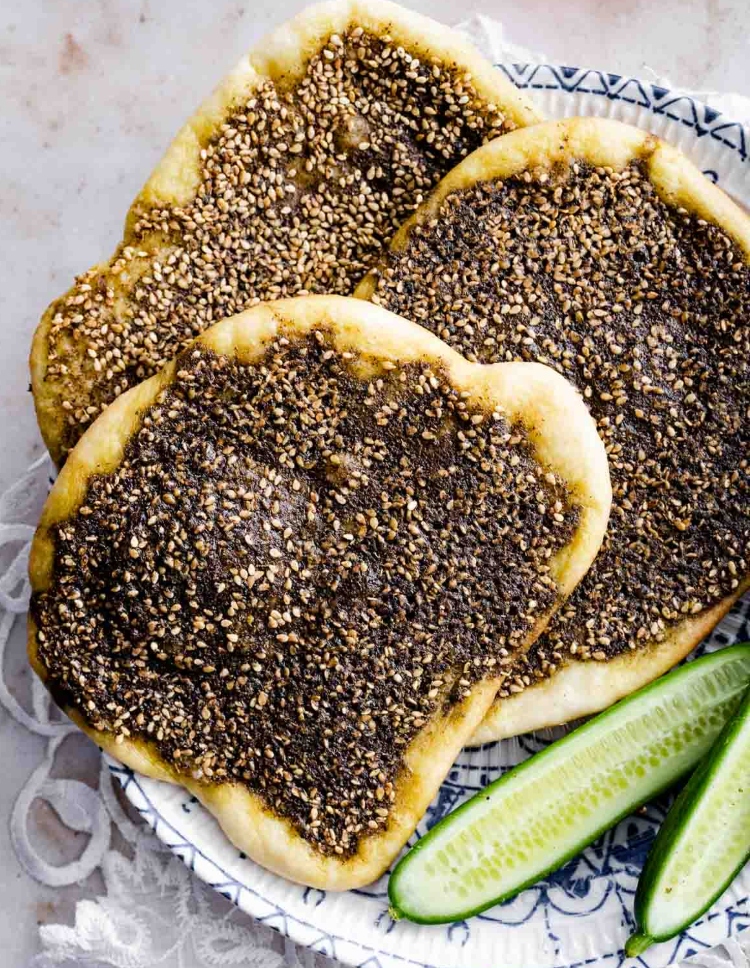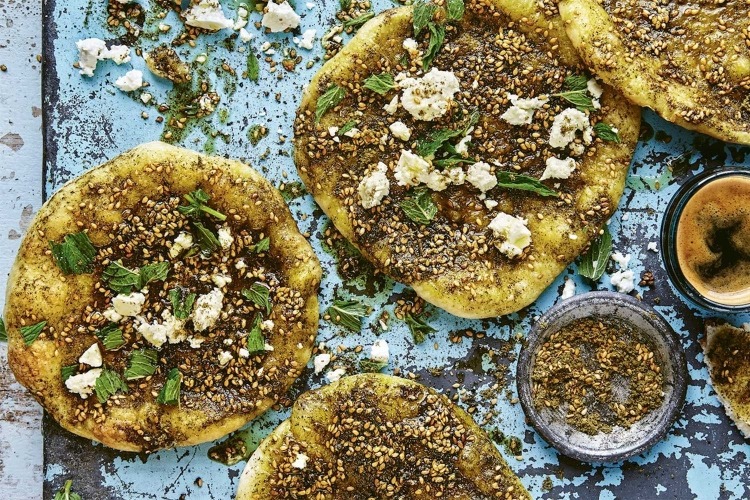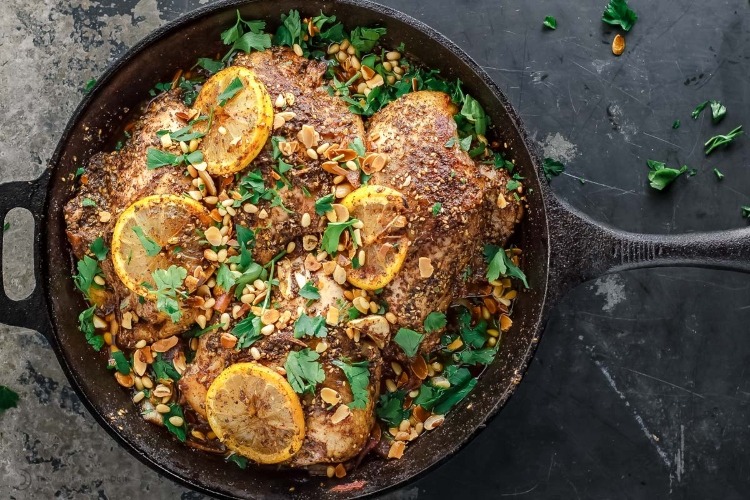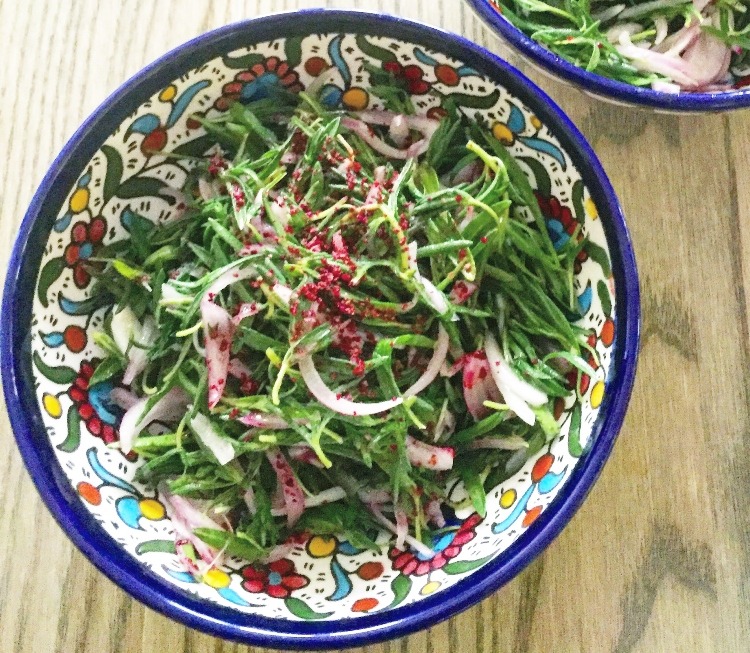In every Arab household, the kitchen would be stocked with some common staples. You’ll have your ghee, garlic and cumin, essential ingredients in most Middle Eastern recipes. At the same time, you’ll also have the infamous zaatar, a spice made of a blend of savory herbs that include dried oregano, thyme, sumac and toasted sesame seeds. Nothing beats that initial tangy kick you’ll get with your first bite which is usually followed by a sweeter and nutty flavor.
Its dynamic flavor profile is what makes it a popular addition to many Arab dishes. With today being Zaatar Day, we thought it would be fun to celebrate by showing unique ways you can incorporate zaatar into your dishes.
As A Garnish
With any protein, you would want it to be infused in a rich marinade, one packed with flavor. Yet, to up the flavor even more, you can top it all off with zaatar. It is known to be a great addition to any dish where chicken, beef or fish is the star ingredient. A simple yet delicious recipe you can try is Suzy Karadsheh’s Zaatar Roasted Chicken Breast.
Starting off by soaking the chicken in a rich marinade of olive oil, sumac, garlic, paprika, all-spice as well as an assortment of other spices, the chicken is then transferred to a baking dish and sprinkled with a generous amount of zaatar before getting roasted. The end result is a juicy and crispy chicken packed with a rich combo of Middle Eastern spices.
As A Cracker

When it comes to preparing any dish with zaatar, one usually would expect it to be used as a simple accompaniment to a toast slathered with labneh or as a topping to manakeesh (Lebanese flatbread), yet the spice can actually be used in more creative ways. One way to play around with zaatar is to incorporate it into Moroccan crackers known as Fekkas.
Fekkas are very similar to Italian Biscotti in terms of texture, shape and size. They are slightly sweet and would sometimes include nuts. Usually they are double baked and so end up with a crunchy and dry texture. Giving the crackers a savory twist, Amanda, a writer and lover of Moroccan food decided to make Zaatar Fekkas. It is a pretty easy recipe as it merely involves shaping the zaatar infused dough into logs which are then baked, cut into small slices then re-baked for that added crunch. The crackers can then be served alone or as a part of a snack board.
As A Salad
With it being the start of the fall season, temperatures are still on the warmer side so its still a great time to make a refreshing salad. Usually a salad would have a leafy green like lettuce or arugula as its main component yet, a fun alternative would be to use fresh thyme leaves. Other than being known as a rich blend of spices, zaatar is also the arabic name for a wild herb known as thyme.
Zahra, an Arab food blogger decided to make a zaatar salad using the fresh herb. Tossing together thyme, chopped onions, oil, sumac and salt in a bowl and followed by a drizzle of some lemon, you can serve it in a bowl or eat it with pita bread. Zahra recommends soaking the bread in the dressing for that added kick in flavor.
As A Cake

Known to be a great accompaniment to several savory dishes, it can be hard to picture zaatar as a cake. The blend of spices give off a strong citrusy and earthy flavor unlike a typical cake that leans more towards sweet, creamy flavor combinations. Yet, Lebanese food blogger Tina Chamoun figured out a way to combine the texture and consistency of a typical cake with the savory flavor of the zaatar.
Her zaatar cake recipe has the same components you would use to make a typical cake including flour, baking soda, salt, vegetable oil and eggs with the exception of not adding sugar. With that mixture, she also added in the zaatar as well as some white cheese, baking it until it formed into a soft fluffy cake with cheese oozing out. These zaatar cake squares can be great with some tea or as a side dish to some hearty soup.
As A Topping

One cannot go wrong with a classic. Zaatar atop the Lebanese flatbread known as a man’ousheh is a well-loved combo that you will probably find on the menu of any typical Lebanese restaurant. It can also be made at home. Amina, a food blogger, made the process easy through her zaatar manakeesh recipe.
The dough is simple as it only requires to be left to rise for a total of 40 minutes then it can be rolled in its big round shape. Using a brush, you’ll slather the olive oil and zaatar mixture atop the soft flatbread until it is spread out equally on its surface then you’ll place the man’ousheh in the oven to bake. If you also love having the man’ousheh with cheese, you can make a second batch of dough and top it off with some feta and mozzarella cheese then bake it in the oven. You will not be to leave your kitchen from the rich smell of cheese and fresh bread that will waft out of your oven.
WE SAID THIS: Don’t Miss… Quick And Easy Mid-Week Middle Eastern Recipes





